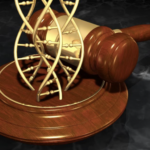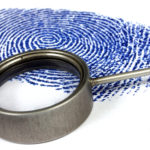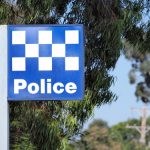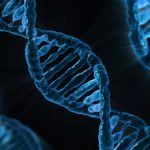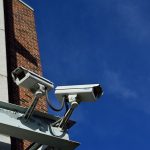There’s a Dire Need for a National Forensic Science Authority
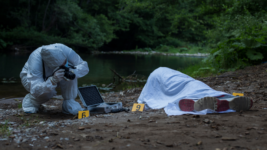
Sue Neill-Fraser is currently living in the Tasmanian community under strict parole condtions, including having to wear an ankle bracelet, which will continue on for another decade, in relation to the murder of her de facto partner Bob Chappell on a yacht on Hobart’s River Derwent on 26 January 2009: a crime she likely didn’t commit.
Recently having turned 69, Neill-Fraser had been inside for 13 years, prior to being released on parole last October. And this is despite evidence against her being circumstantial, and testimony presented in court, since withdrawn, that provided a plausible scenario involving another perpetrator.
The holes in the evidence against Neill-Fraser are numerous and include a forensic scientist having claimed she was able to ascertain whether certain stains on the boat were blood on having sprayed testing agent luminol, which is normally a preliminary test, not one to confirm a result.
This evidence, however, was relied on despite luminol resulting in a positive for over 100 different substances. And when asked how she could tell that samples were blood and not something else, the scientist said it was due to the duration of the sparkling response of luminol on application.
The scientist’s intuitive technique applied to the forensic evidence in the Neill-Fraser case is just one of many examples of how the science is being corrupted in Australian courts. And these have led Civil Liberties Australia (CLA) to call on government to establish a national forensic science authority.
A lack of oversight
“The core problem is the perception of the lack of independence and impartiality of some forensic facilities, particularly those that report directly to police,” explained CLA CEO Bill Rowlings. “As well, the methods, systems and processes used at some laboratories don’t measure up to best practice.”
“In Australia, there’s a dire need for publicly available best practice forensic standards and standard operating procedures (SOPs), as well as for external scientific and public scrutiny and monitoring,” he continued.
CLA wrote to attorney general Mark Dreyfus in January, suggesting that he establish “a major review of forensic science in Australia”, with an eye to establishing a forensic science authority, similar to the one in the UK, to combat the “misuse, abuse and failures” of such evidence in the court system.
Rowlings further outlined that such a body could oversee the proper accreditation of laboratories and the application of standards. And he pointed to the issue of judges and prosecutors not understanding the science, along with juries being confused by battling forensic scientists in court.
“Experts are meant to help the court, but often they are very unhelpful, particularly as some wrongly perceive their mission as being to help police,” he told Sydney Criminal Lawyers.
Prioritising pace
The Commission of Inquiry into Forensic DNA Testing in Queensland released its report in December. Rowlings points to the investigation headed by former judge Walter Sofronoff KC, which now sees that state’s government scrambling to reform, as reason for other jurisdictions to follow suit.
The inquiry was sparked after a 2021 podcast on the 2013 murder of Shandee Blackburn, raised questions about the guilt of ex-partner John Peros who’d been acquitted of the crime, after samples taken from his car, the woman’s body and her home failed to turn up any positive DNA results.
“I have the unfortunate duty to report that the methods, systems and processes used at the forensic DNA laboratory do not, in many ways, measure up to best practice,” wrote Sofronoff, in regard to that state’s facility, and he added that this was due to a focus on a fast turnaround time for results.
The investigation found that on retesting samples marked “DNA insufficient for further processing”, 30 percent were positive across all cases since 2018, when the laboratory stopped testing below a certain threshold, while 66 percent of retested sexual offence samples were found to be positive.
Indeed, managing scientist Cathie Alle was found to have been lying about the running of her lab to her supervisor and senior police.
“Sometimes scientists go rogue and produce the results police desire”, said Rowlings, pointing to several cases in the US, as well as one in WA, which involved the sacking of a Perth scientist six years ago. “There is no tight overview in Australia of forensic scientists or of forensic science.”
The UK model
The United Kingdom established its Forensic Science Authority about fifteen years ago, and it was provided statutory powers in 2021. The science watchdog is currently in the drafting stage of producing its code of conduct.
As Rowlings explains, the body “ensures that the provision of forensic science services across the criminal justice system is subject to an appropriate regime of scientific quality standard” and “it can investigate and issue compliance notices where they have concerns.”
“There is an urgent need for quality control of forensic science in Australia, in general,” the rights advocate continued, “but particularly in the legal sphere where people can go to gaol – and have done for nearly two decades – based on unproven science and scientific methods.”
Further reasons for reform
After having served nineteen years in prison, David Eastman was acquitted of the 1989 assassination-style killing of AFP assistant commissioner Colin Winchester in November 2018, due to “deeply flawed forensic evidence”. And the ACT man was then awarded $7 million in compensation.
Sydney man Gordon Wood didn’t throw his partner Caroline Byrne over The Gap to her death in 1995, but he subsequently spend three years inside for it. Wood was released on it being found that a professor’s scientific tests relating to how far he could have thrown her body were flawed.
Rowlings pointed to discrepancies in the Kathleen Folbigg case, which sees her currently serving a minimum 25 year sentence for being convicted in 2003 of killing her four children. An inquiry is currently reviewing the case, which involves scientists pointing to a likely genetic cause of death.
First Nations man Derek Bromley has been in prison for four decades on conviction of murder in SA. He’s been eligible for parole since 2006, but that requires an admission of guilt, which he refuses, while questions remain regarding evidence provided by unqualified pathologist Dr Colin Manock.
Bromley’s case isn’t the only one that involves discredited Manock. Henry Keogh spent 19 years in an SA prison, after being found guilty of the 1994 murder of his fiancée. And on appeal in 2014, he was released, as it was found key evidence had come Manock, an ex-SA chief forensic pathologist.
While Farah Jama spent 18 months inside, after being sentenced to four years over the sexual assault of a 48-year-old woman at a nightclub in Doncaster, Victoria. But the Somali-born man was acquitted on appeal in 2009, after it was found there had been cross-contamination of lab samples.
A forensic science watchdog
“I don’t believe anyone can claim there is independent scientific examination, when the police officer’s boss and the forensic science experts’ boss is exactly the same person, the police commissioner, as in Tasmania,” Rowlings underscored.
The CLA’s January letter to Dreyfus suggests that the Australian New Zealand Policing Advisory Agency and the “current evolution” of the National Institute of Forensic Science aren’t “up to dealing with this complex and urgent issue”.
On being questioned as to how an Australian forensic science regulator would operate, Rowlings explained that it would see those claiming expertise in this area requiring a licence to conduct forensic science testing and to present its outcomes in a court of law.
“The forensic regulator would be able to deregister a person if their knowledge, skills, methodologies or testing facilities were found to be not up to a particular standard,” Rowlings said in conclusion, “just like what can happen for doctors and lawyers.”


